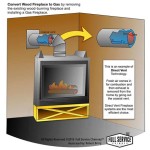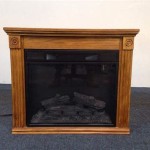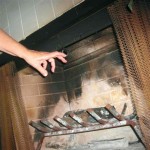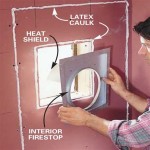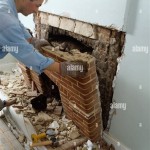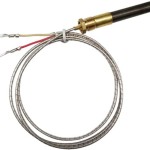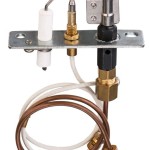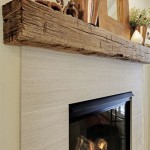Small Gas Fireplaces for Bedrooms: A Comprehensive Guide
The desire for a warm and inviting bedroom atmosphere has led to increased interest in small gas fireplaces. These units offer a convenient and efficient heating solution, providing both supplemental warmth and aesthetic appeal. However, understanding the various aspects of small gas fireplaces, including their types, installation requirements, safety considerations, and operational costs, is crucial for making an informed decision.
A small gas fireplace typically refers to a unit designed for use in smaller spaces, delivering a lower BTU output than larger, whole-house models. Their compact size makes them suitable for bedrooms where space is often limited. These fireplaces offer a cleaner and more convenient alternative to traditional wood-burning fireplaces, eliminating the need for wood storage and the associated mess.
Types of Small Gas Fireplaces
Small gas fireplaces encompass a range of designs and venting options, each with its own set of advantages and disadvantages. Understanding these differences is essential for selecting the right fireplace for specific bedroom needs and spatial constraints.
Vent-Free Gas Fireplaces: Vent-free gas fireplaces, also known as ventless fireplaces, do not require a chimney or external venting system. They operate by burning gas very cleanly, and the combustion byproducts are released directly into the room. These fireplaces are relatively easy to install, making them a popular choice for retrofit applications where adding venting can be costly or impractical. However, vent-free fireplaces require careful monitoring of indoor air quality and are not permitted in some jurisdictions due to concerns about carbon monoxide buildup. It is imperative to install a carbon monoxide detector when using a vent-free gas fireplace.
Direct-Vent Gas Fireplaces: Direct-vent gas fireplaces are sealed combustion units that draw air for combustion from outside the home and vent exhaust gases directly outdoors through a coaxial pipe. This design ensures that no indoor air is used for combustion, and no combustion byproducts are released into the room. Direct-vent fireplaces are considered safer and more efficient than vent-free models, and they are often the preferred option for new installations or renovations where proper venting is feasible. Installation typically requires professional assistance to ensure proper sealing and venting to meet safety codes.
B-Vent Gas Fireplaces: B-Vent gas fireplaces, also known as natural vent fireplaces, utilize existing chimneys or vent systems to exhaust combustion gases. They draw combustion air from the room, and the flue gases are vented upwards through the chimney. B-Vent fireplaces are less efficient than direct-vent models due to the loss of heated air up the chimney. They also require careful maintenance of the chimney to prevent blockages and ensure proper venting. B-Vent systems are often found in older homes where a pre-existing chimney is available.
Gas Fireplace Inserts: Gas fireplace inserts are designed to be installed within an existing masonry fireplace. They offer a way to convert an inefficient wood-burning fireplace into a more efficient and convenient gas-burning appliance. Inserts are available in both direct-vent and B-vent configurations, depending on the existing chimney system and venting requirements. Installing a gas fireplace insert can significantly improve the heating efficiency of the fireplace and provide a more consistent and controllable heat output.
Installation and Safety Considerations
Proper installation and adherence to safety guidelines are paramount when installing a small gas fireplace in a bedroom. Incorrect installation can lead to safety hazards, including gas leaks, carbon monoxide poisoning, and fire. Local building codes and manufacturer's instructions must be strictly followed.
Professional Installation: It is strongly recommended to hire a qualified and licensed gas fireplace installer to handle the installation process. A professional installer will ensure that the fireplace is properly connected to the gas line, vented correctly, and meets all applicable safety standards. They will also be able to inspect the installation for potential hazards and provide guidance on safe operation and maintenance.
Gas Line Connection: Connecting the gas fireplace to the gas line requires specialized skills and tools. A licensed professional should perform this task to ensure a leak-free and safe connection. Improperly connected gas lines can lead to gas leaks, which can pose a significant fire and explosion risk. Gas line connections must be tested for leaks after installation using a gas leak detector.
Venting Requirements: The venting requirements for gas fireplaces vary depending on the type of fireplace. Direct-vent fireplaces require a specific type of venting pipe that is designed to withstand high temperatures and corrosion. B-vent fireplaces require a properly sized and maintained chimney to ensure adequate draft and prevent backdrafting of exhaust gases into the home. Vent-free fireplaces require adequate room ventilation to prevent the buildup of combustion byproducts. The venting system must be inspected regularly to ensure it is free from obstructions and in good working order.
Carbon Monoxide Detectors: Carbon monoxide (CO) is a colorless, odorless, and deadly gas that can be produced by incomplete combustion in gas appliances. It is essential to install a carbon monoxide detector in the bedroom and in other areas of the home where gas appliances are used. Carbon monoxide detectors should be tested regularly to ensure they are functioning properly. If a carbon monoxide alarm sounds, immediately evacuate the premises and call the fire department or emergency services.
Clearances to Combustibles: Gas fireplaces generate heat, and it is important to maintain adequate clearances between the fireplace and combustible materials such as furniture, curtains, and bedding. Manufacturer's instructions specify the minimum clearance requirements for each fireplace model. Failure to maintain these clearances can lead to overheating and potentially a fire.
Regular Maintenance: Regular maintenance is essential for ensuring the safe and efficient operation of a gas fireplace. This includes cleaning the burner assembly, inspecting the venting system, and checking for gas leaks. A qualified technician should perform an annual inspection and maintenance of the gas fireplace to identify and address any potential problems.
Operational Costs and Efficiency
The operational costs and efficiency of a small gas fireplace are important considerations when evaluating their suitability for bedroom use. Understanding these factors can help to estimate the ongoing expenses associated with using the fireplace and to make informed decisions about energy consumption.
Gas Consumption: The amount of gas consumed by a gas fireplace depends on its BTU output, the efficiency of the unit, and the frequency of use. Higher BTU output fireplaces will consume more gas than lower BTU output models. Direct-vent fireplaces are generally more efficient than B-vent fireplaces, and vent-free fireplaces can be efficient in terms of fuel usage, but may have higher long-term costs related to health concerns and air quality.
Fuel Costs: The cost of natural gas or propane varies depending on the location and the supplier. It is important to compare gas prices from different suppliers to find the best rates. The cost of gas will directly impact the operational costs of the gas fireplace. Fluctuations in gas prices can significantly affect the overall heating expenses.
Heating Efficiency: The heating efficiency of a gas fireplace refers to the percentage of fuel energy that is converted into usable heat. Direct-vent fireplaces typically have higher heating efficiencies than B-vent fireplaces because they do not lose heated air up the chimney. Choosing a more efficient gas fireplace can help to reduce energy consumption and lower heating costs.
Supplemental Heating: Small gas fireplaces are generally intended for supplemental heating purposes rather than as the primary heating source for the entire bedroom. Using the fireplace to supplement the central heating system can help to reduce overall heating costs by allowing the thermostat to be set lower. However, relying solely on a gas fireplace for heating may not be sufficient in extremely cold weather or in poorly insulated bedrooms.
Maintenance Costs: Regular maintenance is essential for ensuring the safe and efficient operation of a gas fireplace, and it also incurs costs. These costs may include the cost of annual inspections, cleaning, and repairs. Budgeting for maintenance costs can help to avoid unexpected expenses and ensure the long-term reliability of the gas fireplace.
Comparison to Other Heating Options: When evaluating the operational costs of a small gas fireplace, it is important to compare them to other heating options such as electric space heaters, wood-burning fireplaces, and central heating systems. Electric space heaters can be less expensive to operate initially, but they may consume more electricity over time. Wood-burning fireplaces require the purchase of firewood and can be more labor-intensive to operate. Central heating systems may be more efficient for heating the entire home, but they may not be as efficient for heating a single room.

Small Wall Mounted Gas Fireplace Great For Bedrooms Baths B Model By Fpx Natural

Gas Fireplace Bedroom Small Portable Looking Cool Rooms

20 Beautiful Fireplaces For A Small Living Space Gas Fireplace Corner

Corner Ventless Gas Fireplace Visualhunt

Fall Fixes Get Your Fireplace Cold Weather Ready Bedroom Design Small

Vision Small Gas Stoves Gazco Contemporary

Gas Fireplace Inserts Villa Terrazza Patio Furniture Sonoma 707 933 8286

Mini Franklin Soapstone Gas Stove Woodstove

The Most Stylish Small Gas Fires This Year Direct Fireplaces

One6 SÓlas Contemporary Fireplaces
Related Posts

